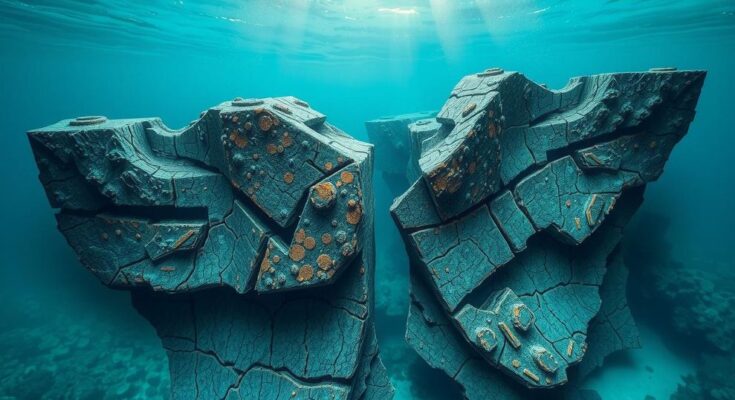An international team from the University of Göttingen revealed that the Neotethys oceanic plate beneath Turkey and Iran is breaking apart, with research indicating significant geological changes caused by the Zagros Mountains. The model developed suggests that additional factors beyond the mountains’ mass are contributing to sediment accumulation and downward surface movement.
An international research team from the University of Göttingen has studied the effects of the Zagros Mountains on the Earth’s surface over the past 20 million years. Their findings indicate that the Neotethys oceanic plate beneath Turkey and Iran is experiencing horizontal separation, resulting in a tear that extends from southeast Turkey to northwest Iran. This research illustrates the complex processes that govern geological evolution beneath the Earth’s surface and was published in the journal Solid Earth.
The collision of two continents over millions of years causes the oceanic floor to descend beneath the landmasses, eventually leading to mountain formation. As these mountains accumulate weight, they cause the Earth’s surface to bend downwards. Sediments eroded from these mountains then fill the depressions, forming plains like Mesopotamia. The researchers built a model based on the weight of the Zagros Mountains and found that this does not fully explain the observed depth of 3-4 km in the studied depression.
Dr. Renas Koshnaw, the study’s lead author and Postdoctoral Researcher at Göttingen University, expressed surprise over the significant sediment accumulation in the area, which exceeds what would be expected from the Zagros Mountains’ weight alone. The study suggests that the sinking oceanic plate, which remains connected to the Arabian plate, contributes to this downward pull. Koshnaw noted that as the slab extends towards Turkey, the sediment-filled depression becomes shallower, indicating that the slab has fragmented, easing the downward force.
The geodynamic model developed through this research may provide insights into the function of the Earth’s rigid outer shell. This knowledge could have practical implications, aiding in the exploration of natural resources, identifying sedimentary ore deposits, and understanding geothermal energy potential. Additionally, it may improve assessments of earthquake risks in the region.
The Neotethys oceanic plate, positioned between the Arabian and Eurasian continents, has been the focus of geological investigations due to its significant role in shaping the landscape of the Middle East. As these major tectonic plates converge, the resulting geological activities influence both the topography and sediment distribution within these regions. Understanding these processes is crucial for comprehending broader geological phenomena and their implications for natural resources and hazard assessments.
The research conducted by the University of Göttingen has unveiled the dynamic processes occurring beneath Turkey and Iran, highlighting the continuous shifting of the Neotethys oceanic plate. The findings suggest that both the collision of continental plates and the resulting geological features, like the Zagros Mountains, play critical roles in the shaping of the Earth’s surface. This study not only enhances our understanding of geological mechanics but also holds potential benefits for resource exploration and risk management in the region.
Original Source: www.technologynetworks.com




